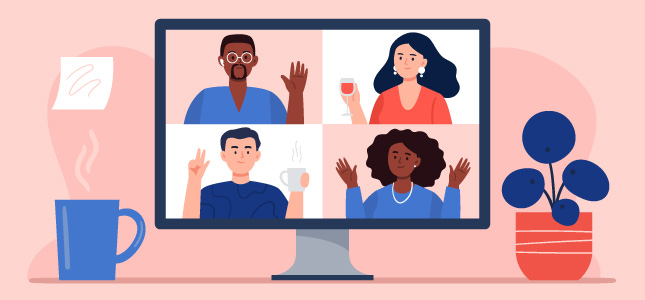There’s no doubt the COVID era is reshaping the consumer goods industry, possibly forever. Consumers’ shift to digital, which had been steadily gaining momentum prior to the pandemic, has ratcheted into overdrive during this time of social distancing and stay-at-home orders.
Against this backdrop, the sales cycle continue to get faster, meaning companies looking to prioritize sales acceleration have to be smart – and quick – when it comes to devising and implementing strategies to boost sales. Even in these unprecedented times, consumers still want their needs met in the quickest, most convenient way possible.
To accelerate sales, brands need to meet consumers where they are – and, these days, that’s largely online, where people are flocking to buy everything from basic needs to luxury items. Successful companies are increasingly focusing on digital sales.
Once the pandemic hit, Indiana-based guitar and music retailer Sweetwater adapted quickly to meet changing customer and employee needs, said CEO and founder Chuck Surack.
“There were literally hundreds of adjustments, big and small that had to be made to adjust to the quickly changing environment,” he said. “We’ve been utilizing texting to communicate with our customers for a while, but when we moved to work-from-home and the ability to effectively call customers was diminished, we leaned heavily into texting to connect quickly and efficiently with our customers.”
It’s also been a priority to keep staff, including the sales team, engaged under these unusual circumstances.
“Internally, the real key for us was to communicate with the team even more than normal as they adjusted to working from home, using modified tools and being a notch removed from their coworkers and other resources,” Surack said. “We wanted to do all we could to ensure that nobody felt like they were on an island.”
The approach, he said, is working: sales are booming at the company, and Sweetwater has grown its workforce in nearly every month of 2020. The company sells instruments, music gear, lighting, and other supplies.
Surack attributes the company’s growth in sales to its “old-school” focus on customer service, coupled with the ability to adapt and embrace emerging technologies.
“For us, it’s always been about a focus on customer service. I’ve always believed that if you put in the effort to consistently do the right thing and do all you can to add value and take great care of your customers and each other, that the money will take care of itself,” he said. “It’s been that personal touch that has made the difference for us. It’s always been and always will be about building and maintain great relationships.”
COVID has spurred brands across nearly all industries to rethink their business models.
When foot traffic in brick-and-mortar stores dried up earlier this year, sports retailer Nike shifted its focus to digital sales. Selling on digital platforms had long been a part of the company’s sales strategy, but the pandemic pushed it to forefront.
Earlier this year, Nike reported that digital sales surged 75 percent during its fourth quarter, which ended May 31. Even though that same quarter brought a $790 million quarterly loss and revenue well below Wall Street expectations, CEO John Donahoe touted the retailer’s renewed focus on digital sales as a success to stock analysts at the time.
The company is pinning much of its sales acceleration strategy on direct digital sales, in particular. After the pandemic shuttered many stores across the nation, Nike put more attention and resources into its direct-to-consumer business. In July, the company announced it was reorganizing its management with the specific intention of growing its direct-to-consumer business.
In the quarter that ended May 31, 30 percent of Nike’s revenue came from digital sales. That’s a target the company didn’t expect to reach until 2023.
Household names and lesser-known brands alike can also accelerate sales by focusing on social media marketing, particularly by enlisting the help of influencers. This technique was gaining popularity prior to COVID-19 and is something brands can embrace even more now.
A 2019 survey of marketers by Big Commerce found 65 percent planned to increase influencer marketing budgets in 2020, and 89 percent said the return on investment from influencer marketing is comparable or better than other marketing channels. The most common influencer budget was $1,000 to $10,000 per year, the survey found.
Consumer habits formed during the pandemic will last well after it’s over, according to research by Accenture, which predicts these unprecedented times have forever altered how we shop. COVID-19 has spurred more people to embrace technology than ever before, whether it’s for health and safety reasons, for ease, or both. It’s also changed workforce dynamics as many employees are working from home.
While these are undoubtedly challenging times for many brands across many industries, there are real opportunities to accelerate sales for those that are willing to expand their digital and direct sales strategies. Just as consumer habits may be forever changed by the pandemic, brands may benefit well into the future from the changes they are making now.








 There is a deep emotional connection to maintain. Every one of us remembers going to the grocery with our mother and watching her get her checkbook out, that kind of tactile response. We want to maintain that, but we also want to be really convenient. And obviously the pandemic has forced the issue. A lot of those things became very big because people didn’t want to physically go into the store. Delivery became big because people didn’t even want to leave the house. Those things have grown significantly.
There is a deep emotional connection to maintain. Every one of us remembers going to the grocery with our mother and watching her get her checkbook out, that kind of tactile response. We want to maintain that, but we also want to be really convenient. And obviously the pandemic has forced the issue. A lot of those things became very big because people didn’t want to physically go into the store. Delivery became big because people didn’t even want to leave the house. Those things have grown significantly.

